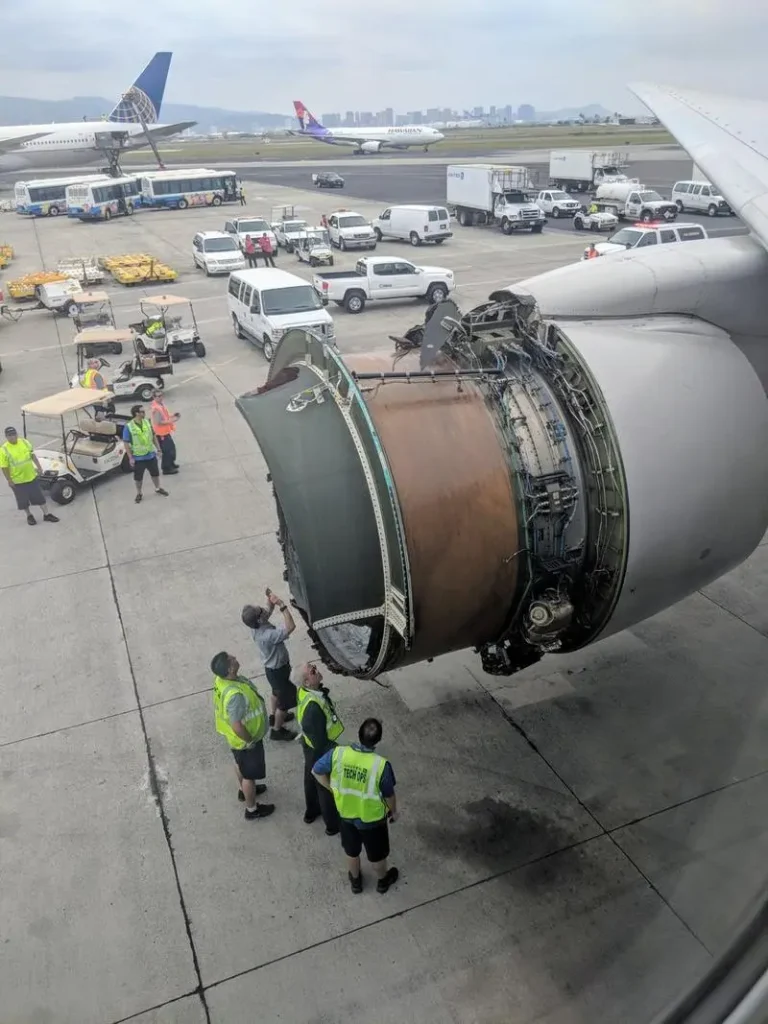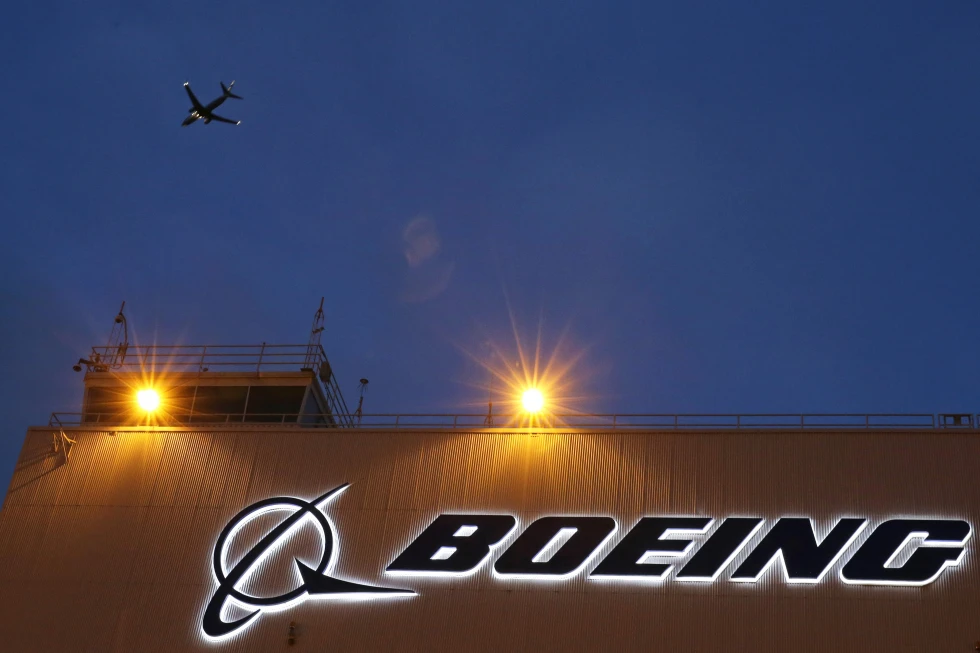On a seemingly routine Sunday morning in Denver, a Southwest Airlines jet found itself at the center of an unexpected and potentially hazardous situation.
As reported by the Federal Aviation Administration, the aircraft was forced to return to the Denver airport shortly after takeoff when the engine cover detached and struck one of the wing flaps.
This incident, while alarming in nature, ultimately ended with a safe landing and the assurance that the passengers bound for Houston would soon be accommodated on another flight.
The Boeing 737, a workhorse of the commercial aviation industry renowned for its reliability and safety record, demonstrated its resilience once again as it touched down without incident.
Southwest Airlines, in a prompt and reassuring statement, acknowledged the inconvenience caused to the passengers due to the unforeseen delay.
However, the airline emphasized that the safety and well-being of its customers and employees remained paramount, underscoring their commitment to upholding the highest standards of safety and operational excellence.
The aftermath of such an incident naturally prompts a thorough investigation and review process to ascertain the root cause and prevent any recurrence in the future.
The airline’s maintenance teams swiftly sprung into action, meticulously inspecting the aircraft to identify any potential issues or vulnerabilities that may have led to the detachment of the engine cover.
This diligent and proactive approach is a testament to the industry’s rigorous safety protocols and unwavering dedication to ensuring the airworthiness of every aircraft that takes to the skies.
In the realm of aviation, where precision and vigilance are non-negotiable imperatives, incidents such as the one experienced by the Southwest Airlines jet serve as poignant reminders of the inherent risks and complexities involved in air travel.
Despite the advancements in technology and stringent safety regulations that govern the industry, unforeseen events can still occur, underscoring the need for constant vigilance, preparedness, and swift response to mitigate any potential threats to safety.
As passengers, we place our trust in the hands of airlines and aviation professionals every time we board a flight, entrusting them with our safety and well-being as we journey to our destinations.
The incident in Denver serves as a stark illustration of the critical role that rigorous maintenance practices, comprehensive safety protocols, and decisive action play in upholding the highest standards of safety and ensuring the integrity of the aviation ecosystem.
In conclusion, while the incident involving the Southwest Airlines jet in Denver may have caused a momentary disruption and concern, it also serves as a testament to the resilience, professionalism, and unwavering commitment to safety that define the aviation industry.
As the passengers are rerouted to their destination and the aircraft undergoes thorough scrutiny and maintenance, the incident stands as a reminder of the collective efforts and dedication that safeguard the skies and uphold the trust of millions of passengers who take to the air each day.
In the realm of aviation, where safety is paramount and reliability is crucial, the occurrence of mishaps can have far-reaching implications not only for the airlines involved but also for the passengers and the industry as a whole.
The recent events surrounding a major airline, including the cancellation of a flight due to an engine fire and subsequent investigations by the Federal Aviation Administration (FAA), have once again brought the spotlight on the importance of stringent safety protocols and thorough maintenance practices in the airline industry.
The airline in question faced its second mishap within a week, when a flight originating from Texas was abruptly canceled following a report of an engine fire.
The incident, as confirmed by the Lubbock, Texas, fire department through online channels, necessitated the swift extinguishing of a fire that had erupted in one of the two engines of the Boeing 737-800 aircraft.
This alarming development not only disrupted the travel plans of the passengers on board but also raised concerns about the safety standards and maintenance procedures employed by the airline.
It is noteworthy that both incidents involving engine-related issues occurred on Boeing 737-800 aircraft, which are considered older models in comparison to the more recent 737 Max series that has garnered significant attention in recent years due to safety concerns.
The fact that two separate incidents involving engine problems transpired within a short span of time underscores the need for a comprehensive investigation by the regulatory authorities to ascertain the root causes and prevent any recurrence of such incidents in the future.
The FAA, as the governing body responsible for ensuring the safety and compliance of airlines operating in the United States, has initiated investigations into both incidents to determine the factors contributing to the engine fires and assess the overall safety of the airline’s fleet.
The findings of these investigations are expected to shed light on any potential lapses in maintenance, operational procedures, or aircraft design that may have led to the engine fires and will serve as a basis for implementing corrective measures to enhance safety standards within the airline industry.
The implications of these mishaps extend beyond the immediate inconvenience caused to passengers and the financial repercussions for the airline involved.
They underscore the critical importance of proactive risk management, rigorous maintenance practices, and continuous monitoring of aircraft performance to mitigate the likelihood of such incidents occurring in the future.

In an industry where public trust and safety are paramount, adherence to stringent safety protocols and adherence to regulatory standards are non-negotiable imperatives that must be upheld by all stakeholders.
As the investigations by the FAA progress and the findings are made public, it is incumbent upon the airline industry to heed the lessons learned from these incidents and take proactive steps to bolster safety measures, enhance maintenance practices, and prioritize the well-being of passengers above all else.
The incidents serve as a sobering reminder of the inherent risks associated with air travel and the collective responsibility of airlines, regulatory bodies, and industry stakeholders to uphold the highest standards of safety and operational excellence.
In conclusion, the recent engine fires on Boeing 737-800 aircraft serve as a wake-up call for the airline industry to reevaluate its safety protocols, maintenance practices, and operational procedures to ensure the highest levels of safety and reliability for passengers.
The FAA’s investigations will play a crucial role in identifying the underlying causes of these incidents and guiding the industry towards implementing robust measures to prevent similar mishaps in the future.
It is imperative that lessons are learned, corrective actions are taken, and a renewed commitment to safety is embraced by all stakeholders to uphold the integrity and trustworthiness of the aviation industry.
